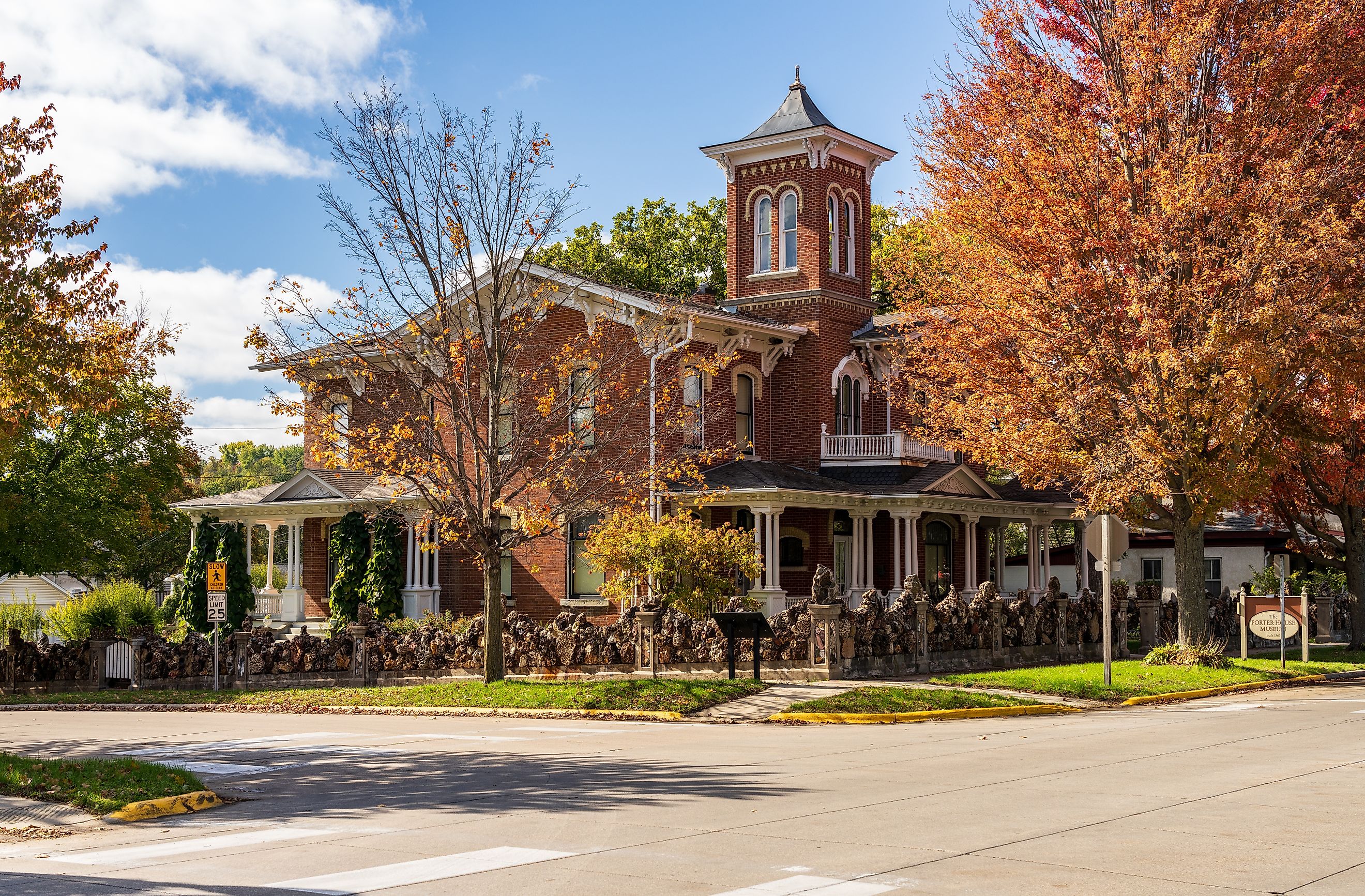
7 Old-World Towns to Visit in Iowa
With a history dating as far back as the last ice age and the first effigy mound builders leading up to statehood, Iowa has experienced and contributed its share of monumental conflicts and changes in American history. Most of all, the many Old-World towns to visit in Iowa have preserved many of the remarkable epochs that shaped Iowa’s economic and natural landscapes. In idyllic spots along the bountiful Mississippi River, several communities have developed with their own unique features, like the Snake Alley in Burlington, Muscatine’s accommodations for pivotal figures like Mark Twain, or the many German festivals in the Amana Colonies. But all of these historic small towns share a fond appreciation and a dedication to protecting Iowa’s history and its indigenous and pioneering artifacts. Live and learn all you can from the Old-World towns to visit in Iowa.
Burlington
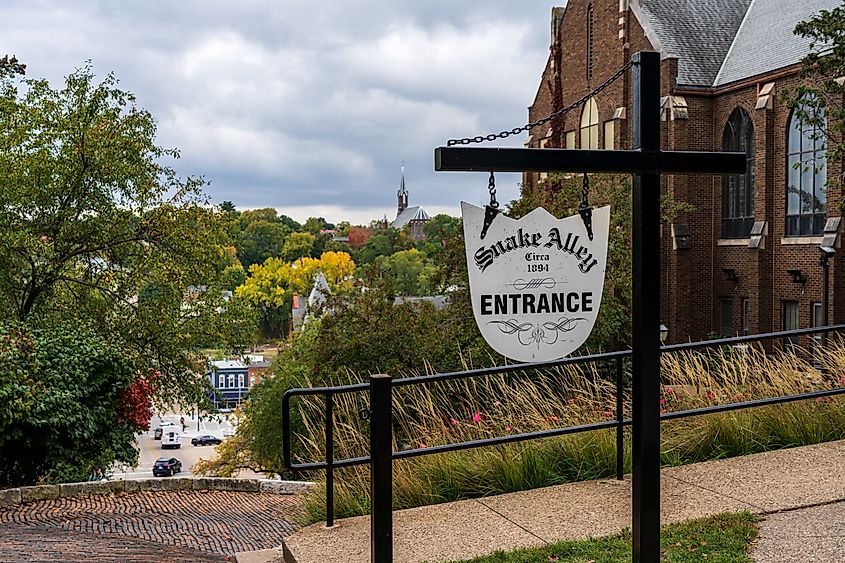
Entrance to Snake Alley in Burlington, Iowa, the world's steepest bendy street.
On the Mississippi River that marks the state border separating Iowa from Illinois lies the historic town of Burlington. Established in the year 1838 and only about 78 miles from the city of Davenport, Burlington was once a Mesquakie village called Shoquoquok, where Native Americans in Iowa harvested flint to manufacture tools and weapons. In 1833, Shoquoquok was renamed Flint Hills during the Black Hawk War and was eventually renamed Burlington after a settler who once lived in Burlington, Vermont. Within the brief periods of 1837-38, Burlington was the territorial capital of Wisconsin. Eventually, in the period of 1838-40, the town became the Iowa territorial capital.
These days, Burlington is a thriving little community with dozens of well-preserved 19th-century buildings at the Heritage Hill National Historic District. Additionally, you will also find Snake Alley, a street similar to vineyard paths in France and Germany that horse-drawn carriages used to gradually climb Burlington’s steep hill from the riverbank. This same road was also featured in Ripley's Believe It or Not as being "Unbelievably Crooked" and the Number One Odd Spot in Ripley's Guide to the Curious Corners of America. Snake Alley also happens to be the site of a bike race known as the Snake Alley Criterium, which is held each Memorial Day weekend.
Muscatine
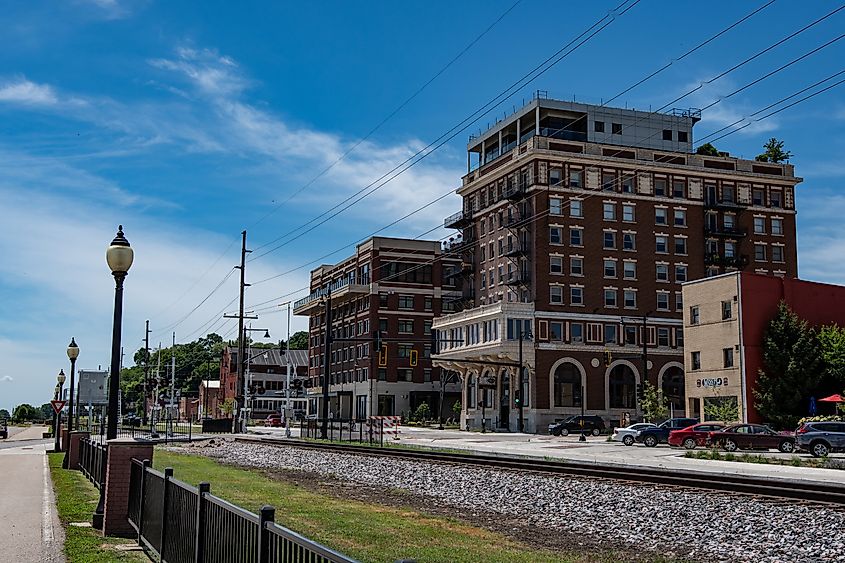
The former Hotel Muscatine and the Merrill Hotel, Muscatine, IA. Editorial credit: JNix / Shutterstock.com
About an hour north of Burlington on the Mississippi River, the small town of Muscatine may seem like any ordinary town in Iowa. However, Muscatine was once a lovely and amicable residence to a number of notable historical figures such as the writer Mark Twain, US civil rights ambassador Alexander Clark, and Alfred Wilson Lee, founder of Lee Enterprises, which is now the fourth largest newspaper group in the US.
From the late 1800s to the early 1900s, Muscatine became renowned as the Pearl Button Capital of the World. John F. Boepple, a skilled button cutter, found mussel shells in the Mississippi River that were ideal for making pearl buttons. By 1904, nearly 40% of the world’s output of buttons was manufactured in Muscatine. There are dozens of historic buildings for you to tour, such as the Pliny and Adelia Fay House, the Alexander Clark House, and S.M. McKibben House. So, in this town, which derives its name from the Mascoutins Native Americans or from a Native American word that means “island of fire,” Muscatine is a must-see destination in the beautiful state of Iowa.
Keokuk
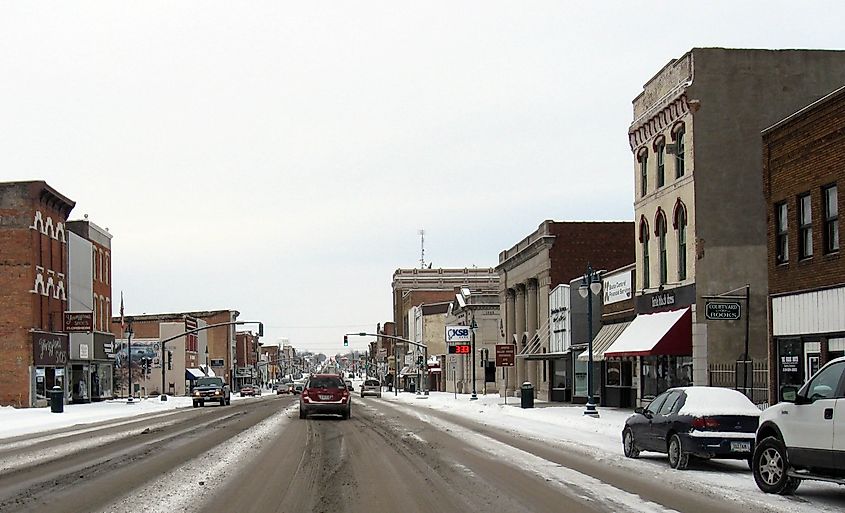
Main Street in Keokuk, Iowa. By Billwhittaker, CC BY-SA 3.0, Wikimedia Commons
Keokuk is at the point where the Des Moines River and the Mississippi River meet and only about 40 miles south of Burlington. The town started as a simple trading post in 1820, established by traders, including Samuel C. Muir. In the year 1837, when the town began to grow and prosper, it was soon named after the Sauk Native American chieftain known as Keokuk, whose body now rests in the town’s city park. The nearby Lake Keokuk was created when the Des Moines River was dammed, and during the American Civil War, Keokuk was the site to treat wounded American soldiers fleeing on boats through the Mississippi River. However, not many soldiers survived their fatal wounds, and over 600 of them were buried in the Keokuk National Cemetery. Visitors to Keokuk might be interested in touring the home of Samuel F. Miller, a justice of the US Supreme Court appointed by President Abraham Lincoln, or see a collection of Mark Twain’s memorabilia in Keokuk’s public library.
McGregor
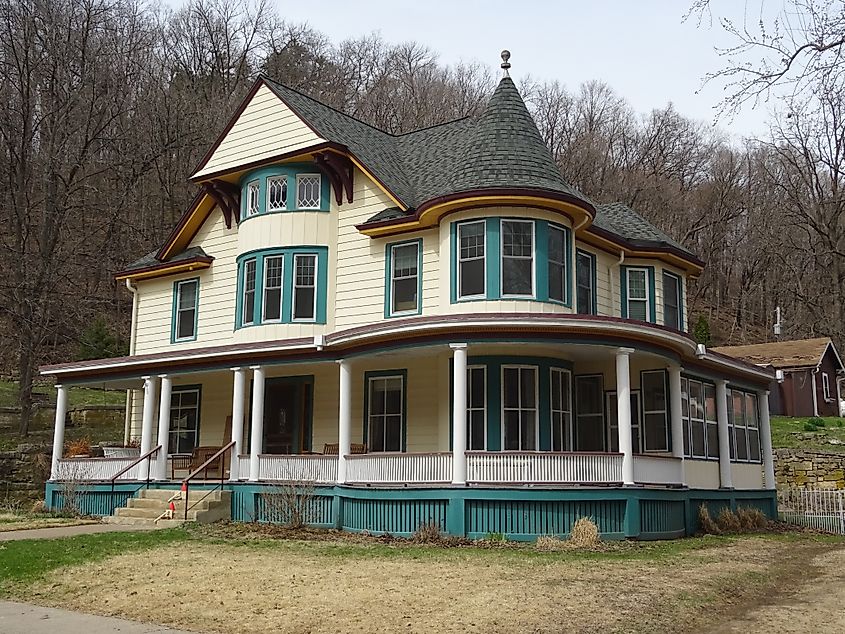
Beautiful old house in McGregor, Iowa. By Billwhittaker, CC BY-SA 3.0, Wikimedia Commons
McGregor, right at the state border between Iowa and Wisconsin as marked by the Mississippi River, is one of the smallest Old-World towns to visit in the state. When a tight-knit family from Scotland, descendants of the great Rob Roy MacGregor, immigrated to America, they had a hard time finding a new home while the Sioux, Sauk, Fox, and Winnebago tribes were on the warpath during the Black Hawk War. But when the war ended, the McGregor family a ferry business on the Mississippi River to support westward expansion.
After attracting more businesses and connections with nearby settlements such as Prairie du Chien, McGregor has grown into a thriving trade community close to a handful of Iowa’s natural and scenic landmarks, such as the Driftless Area, the Effigy Mounds National Monument, and Pikes Peak State Park. Travelers might also be interested in exploring the Yellow River State Forest - Paint Creek Unit and Bloody Run Wildlife Management Area. Either way, you will definitely feel the Old-World charm of Scotland in this small American town.
Bellevue
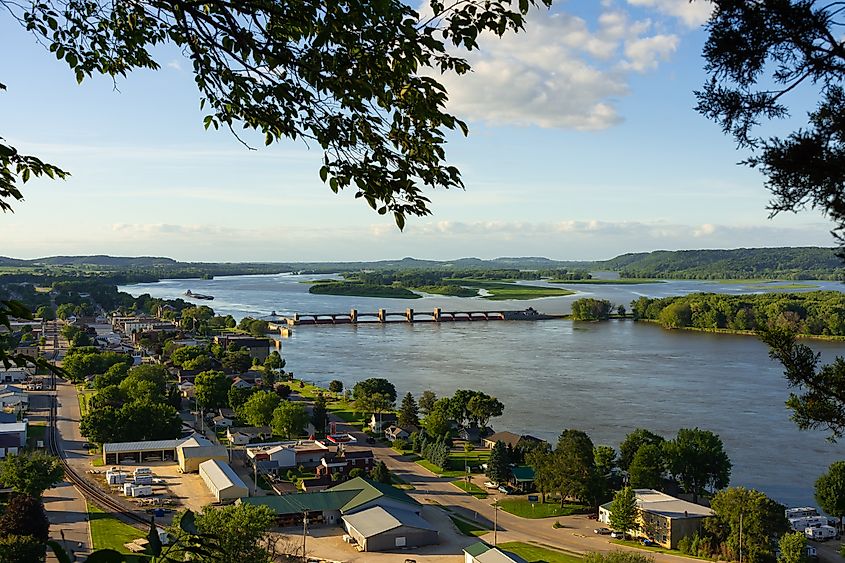
As one of the few towns built next to large hills and bluffs, Bellevue fulfills its French name for “beautiful view” by promoting some of the most sublime spectacles around this portion of the Mississippi River. Founded by John D. Bell in 1835, when he built his first cabin as postmaster in the town, Bellevue has had its share of highs and lows. It rose to prominence early on when Peter Dutell built Bellevue’s first hotel in 1836, the Bellevue House. Even now, it accommodates hundreds of tourists who are eager to go exploring at the Bellevue State Park and Little Mill Wildlife Management Area.
But there was a time in 1840 when the Bellevue War gave the town a dubious reputation and when it competed with the nearby town of Andrew for the county seat. Bellevue’s most reputable historical artifact is its county courthouse, first functioning in 1845 and since then has been the oldest active school building in Iowa. On the Illinois side of the Mississippi River, you might also be tempted to visit the nearby Lost Mound National Wildlife Refuge. Whatever you intend to accomplish in Bellevue, just remember to take in the beautiful views this historic town has to offer.
Decorah
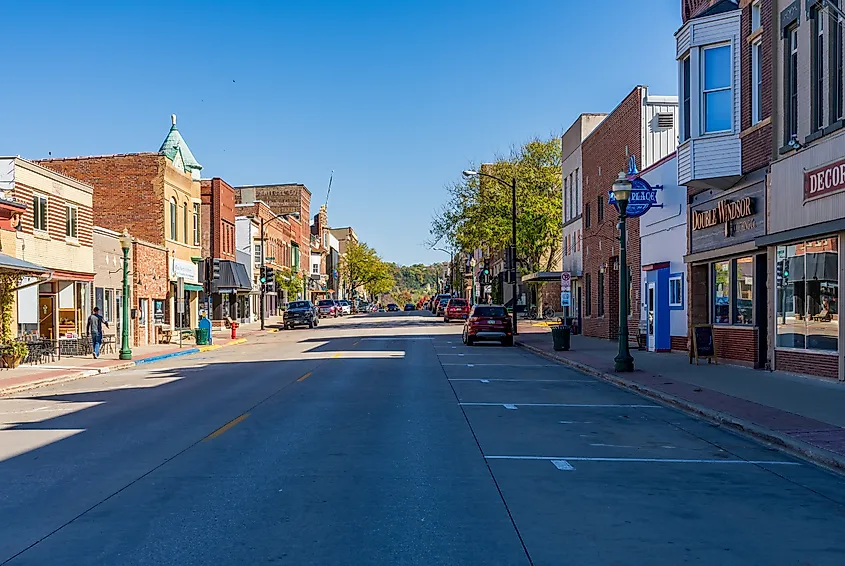
Shops and stores on W Water Street in Decorah, Iowa. Editorial credit: Steve Heap / Shutterstock.com
Decorah has roots reaching as far back as the prehistoric era. In the Decorah Impact Crater—a 3.5-mile-long, 465-million-year-old crater caused by a meteor impact—paleontologists unearthed Pentecopterus decorahensis, Decorah’s giant scorpions. In the last ice age, the melted glaciers helped form what is now known as the Driftless Area and also created a number of outdoor landscapes like the Ice Cave, Malanaphy Springs, and Dunning’s Spring. More of Decorah’s cultural and historic ties can be viewed from the Norwegian-American Museum, home to many mementos from Norway. And more exploration can be gained when traveling through Phelps Park, Palisades Park, and Van Peenen Memorial Park. Decorah is a town showcasing both a natural appreciation of the present and a historic respect for the past.
The Amana Colonies
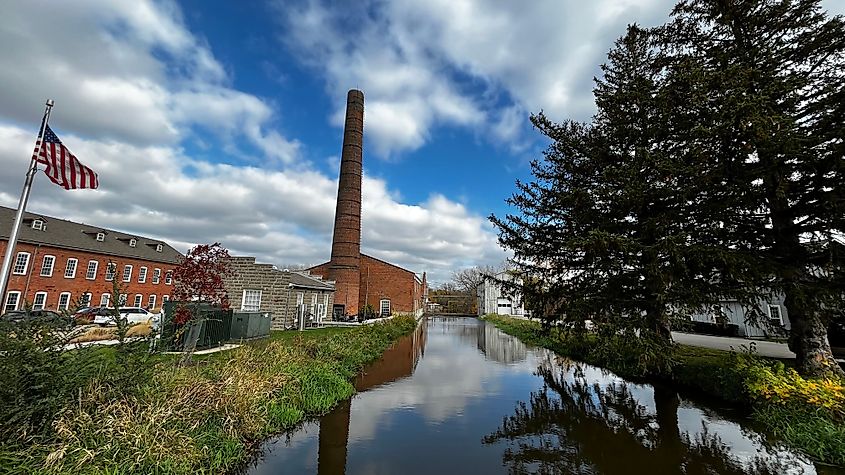
Amana Colonies in Iowa.
In 18th-century Germany, a religious movement called Pietism was being prosecuted from the official orthodox faiths in Europe. Seeking asylum in America in 1855, a community of Pietists found safe land in Iowa and called their first villages “Bleibtreu” or “remain faithful.” Eventually, the Pietist leaders officially named the collection of six interconnected villages Amana or the Amana Colonies after the Song of Solomon 4:8, in which “Amana” translates to “remain true.”
Since then, this small town, only 30 minutes from the big cities of Iowa City and Cedar Rapids, has remained true to its cultural and historical heritage with places like the Homestead Church and the annual Tannenbaum Forest from November to December. One can tour the Mini-Americana Barn Museum to see Henry Moore’s impeccable carpentry skills and participate in the Wurst Festival in June. You might also be interested in the Maifest in May, the town's version of Oktoberfest, and Winterfest in December. Whichever activity you wish to participate in to celebrate the Amana Colonies’ historic connections, you will undoubtedly feel rather pious and joyous throughout your stay in this beautiful German-themed town.
Honoring Iowa’s Historic Heritage
History is rarely so filled with good and hopeful stories. The history of Iowa, for instance, was founded on the removal of most Algonquin-speaking Native Americans from the land when they signed government treaties of peace in the late 1800s to end conflicts like the Black Hawk War. Many of the old-world towns to visit in Iowa were built on land once belonging to the Winnebago, the Fox, the Sioux, and others. However, reparations have been made in recent years, and these storied small towns in Iowa now inform newcomers of the shared histories between Iowa’s indigenous cultures and immigrants from Europe and beyond so as to keep Iowa’s cultures alive in one’s memories. Keep an open mind and keen ears and eyes when learning all about the backgrounds and activities each old-world town in Iowa has to offer.










